Strategy February 07, 2019
Retail and the Promo Products Industry
Promotional products buyers have always desired retail-level quality, but the industry was habitually playing catch-up. Now, thanks to trendy new offerings and the availability of top consumer brands, salespeople finally have the power to deliver what clients want.
For decades, retail has been the yardstick by which promotional products have been measured. The preoccupation was only natural: The same customers who bought and received promo products also shopped religiously at retail. Every desire that drove consumer behavior – quality, trendiness, functionality, status, value – naturally transitioned to the promo industry.
But far too often, buyers and end-users were left disappointed. Too many promotional products lacked quality. Material was shoddy and durability was lacking. The trends offered were habitually behind the times. In comparison to retail, the promo industry couldn’t measure up.
Podcast
Nina Bloomstein Shatz, brand development director at HALO Branded Solutions, discusses the growing availability of retail items in the industry and what that means for distributors. A companion episode to the Advantages February 19 cover story.
That’s all changed. Today, suppliers have R&D teams that predict and get in front of retail trends – not just months ahead, but years. They work with sophisticated supply chains to produce retail-grade items that are current and desirable.
Meanwhile, retail is going through well-publicized tumult – high-profile store closures, declining foot traffic and evolving go-to-market strategies.
These changes have certainly altered the dynamic between the two industries. But instead of driving promo and retail apart, the two are aligned more closely than ever. Nowhere is that more obvious than the relationships suppliers have forged with retailers themselves, bringing an influx of brands that see big opportunity in this industry. When Nina Bloomstein Shatz, brand development director at HALO Branded Solutions (asi/356000), started in the industry almost 15 years ago, retail brands were just coming into the space. She was pleasantly surprised each time she found out she could get the retail name-brand item that a client asked for. “Now we’re surrounded by retail trends,” she says. “Suppliers provide retail name brands, and the gap between retail and promo items inspired by retail trends isn’t so wide. Our clients are looking to jump on brand-name styles and fabrics. We’re in a place now where they can ask if we can get Nike, North Face or Patagonia, and we can say, ‘Absolutely.’”
Even as retail changes, the promotional industry’s aspirational relationship to it hasn’t. Distributors and suppliers insist it remains the key influence over buyers’ wants and demands. “Our clients want the look and feel of items on retail shelves,” says Joseph Sommer, owner of Whitestone Branding. “It’s the perceived value. They don’t want their brand put in a closet or thrown away.”
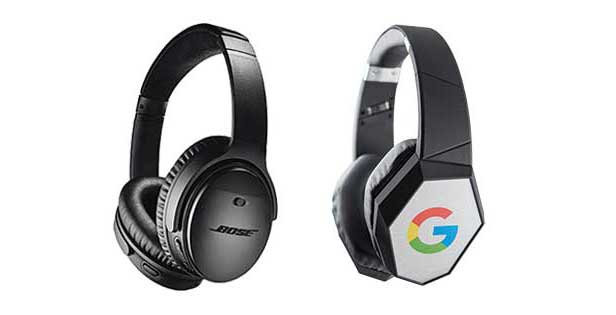
Retail brands and promo-specific retail-inspired products can stand on equal footing these days. Two examples: Bose wireless headphones (7895640010) from Beacon Promotions (asi/39250); beaconpromotions.com, and Bluetooth noise-cancelling headphones from OrigAudio (asi/75254); origaudiopromo.com.
That means the promo industry will have to continue keeping pace with retail trends and brand-name items. And that’s a good thing: It gives the industry a jolt of relevancy by staying so close to what buyers want. To accomplish that, suppliers and distributors say it’s forcing everyone to step up their efforts – from suppliers offering more brand-name and retail-inspired products to distributors knowing which retail products they can source and what’s realistic for their clients’ needs and budgets.
“As long as there’s power in a brand, retail will always influence promo,” says Adam Kovar, vice president of marketing and compliance at ETS Express (asi/51197). “Everyone has their brand allegiances.”
 etail’s challenges have become so pronounced in the last two years that pundits and the media coined the term “Retail Apocalypse.”
etail’s challenges have become so pronounced in the last two years that pundits and the media coined the term “Retail Apocalypse.”
The truth is more nuanced. Yes, high-profile store closings (Sears, Toys “R” Us, Brookstone and more) have crafted much of the conversation around retail’s current struggles. But according to IHL, retail sales were actually up $190 billion in the first half of 2018, with a net increase of 3,835 store openings for the entire year. However, the growth is segmented: Grocery stores, supercenters and discount retailers are doing well, while department stores, apparel chains and specialty hard good stores (electronics, sporting goods, books and more) are struggling. And e-commerce is doing unbelievably well – Amazon alone grew by $15 billion year-over-year between 2017 and 2018.
The takeaway: retail as a whole is evolving. Omni-channel strategies and direct-to-consumer models highlight the tricky paths retailers must follow in preserving their brick-and-mortar presence while competing in the growing e-commerce boom.
“As long as there’s power in a brand, retail will always influence promo.” — Adam Kovar, ETS Express
The current retail landscape underscores the influence the digital medium has on buyers. Instead of relying on store window displays, consumers are looking online, particularly at influencers and celebrities on social media, to give them the trend low-down. Social influencers have enormous impact on trends, and brands know that: In 2017, Instagram had 12.9 million brand-sponsored influencer posts with a market worth of about $1.7 billion, according to consumer psychology firm Crobox.
This trickle-down effect is nothing new; celebrities always have an enormous influence over their fans, and retail makes those trends widely available for consumers. But social media has sent that dynamic into hyperdrive.
Consider athletic brand Champion, says Megan Erber, regional sales manager at S&S Activewear (asi/84358). It was a popular brand in the ’80s and ’90s, and then dissipated. “Out of nowhere, celebrities like the Kardashians, Justin Bieber and Selena Gomez started wearing it again,” says Erber. “Fans saw it on social media, and drove huge demand. Then Macy’s calls Hanes/Champion (asi/59528) and asks for several thousand by the next day, and promo in turn sees more demand. That’s the line it often follows, from celebrities to retail to promo.”
Kelly Holmes, vice president of sales at neckwear supplier Buffalo Bay (asi/42416), remembers a similar spike in demand for a specific product after quarterback Robert Griffin III was drafted second overall by the Washington Redskins. At the NFL draft, he wore a distinctive tie with horizontal stripes. “That pattern was almost unheard of in promo, but a private school saw it and wanted ties like that, and demand grew,” says Holmes. “He really established that style at the draft. I’ve never seen that kind of response before. People see it on celebrities and they want it. It’s the digital age we’re in.”
It’s also an era of immediacy, in which consumers see and then want very specific items – and quickly. “They want something great right now,” says Sterling Wilson, founder of Pop! Promos (asi/45657). “Suppliers and distributors are going to have to adapt to stay relevant.”
“Clients used to ask, ‘What do you have that’s cool?’” adds Shatz. “Now they ask, ‘What will people be using next year?’ or ‘What’s new for 2020?’ They expect us to have new ideas and to know what the retail world is showing.”
o k eep up with fast-paced client demands, the promo industry has gotten better and faster in offering retail trends, with firms expanding their lines considerably. If it hasn’t completely erased the gap between retail and promo, this growth has certainly narrowed it and signaled to retail that this industry shouldn’t be considered an afterthought.
eep up with fast-paced client demands, the promo industry has gotten better and faster in offering retail trends, with firms expanding their lines considerably. If it hasn’t completely erased the gap between retail and promo, this growth has certainly narrowed it and signaled to retail that this industry shouldn’t be considered an afterthought.
And so the interaction between the two industries changed: While retail once thumbed its nose at promo, suppliers and distributors are now sourcing products directly from the brands themselves and often officially partnering with others.
“Brands want to jump into this industry,” says Shatz. “Brick-and-mortar isn’t doing so well, so retailers are looking at different ways to market themselves. It’s a way to advertise with co-branding opportunities.”
Sommer says it’s been particularly apparent at large industry trade shows that feature name brands prominently. “Five years ago, those names were just a small portion of the room,” he says. “Now it’s huge. Retail brands have found this industry, and suppliers are getting smarter in offering them.”
A number of those retail brands were originally resistant to promo, says Sommer. That’s obviously changed.
“It used to be that Under Armour would never work in this space; now they do,” he says. “North Face is now the biggest brand at SanMar (asi/84863) behind Nike. RuMe partnered with Gemline (asi/56070). Promo is Gemline’s specialty, so RuMe went with them to get their items into this industry, and distributors get to sell top-notch stuff to clients.”
Retail brands are realizing promo is a huge industry, worth more than $20 billion, and they want a piece of it. “Brands have gotten enough calls from businesses asking for 500 pieces, and it’s the easiest sale,” says Sommer. “Then they see there’s actually an industry for this.”
But it’s not just the size of the industry that’s appealing to them – it’s also the increased demand for high-end items. According to a 2018 survey of end-buyers conducted by ASI Market Research, 86% of end-buyers consider the brand name on an item to be important when making a promotional product purchasing decision regarding apparel.
“Smart retailers recognize the promo market is more significant than tchotchkes,” says Kovar. “There’s a whole corporate world of promotional products, and it’s financially strong.”
Quality products in the industry mean a better characterization of it as a whole. “Retail in promo is a positive,” says Ann Baiden, CEO and founder of Innovatex Solutions (asi/231194). “It’s bringing increased value to the industry since we’re associated with name brands.”
It helps remove what Shatz calls the industry’s “tchotchke stigma,” since the prevalence of retail items means promo is steadily moving beyond the smaller, cheaper items that have typically defined the industry.
“Are retail trends and promo working hand-in-hand and increasing sales on both sides?” she asks. “Yes, I agree 120%.”
 n an ideal world, promotional products buyers want two things: the retail name, or a product that’s retail in everything but name. For the longest time, the industry struggled to consistently offer either of those options. Now, as retail brands enter the industry, suppliers are also increasingly offering retail-inspired items – products that smartly take their cues from retail but are made specifically and solely for this industry.
n an ideal world, promotional products buyers want two things: the retail name, or a product that’s retail in everything but name. For the longest time, the industry struggled to consistently offer either of those options. Now, as retail brands enter the industry, suppliers are also increasingly offering retail-inspired items – products that smartly take their cues from retail but are made specifically and solely for this industry.
“When clients ask for retail, I always offer both retail and retail-inspired,” says Erber. “I’ll show them a secondary item at a lower price point because it’s not the name brand, but it’s the same quality item, there’s better stock and the price is lower. I also don’t want to lose the business because I’m too expensive.”
Kovar first asks the distributor client about the end-buyer’s budget. If it’s on the higher end, he’ll recommend they go with Contigo, a brand ETS has officially partnered with. Otherwise, he’ll recommend the supplier’s many retail-inspired wholesale pieces. “They’re functionally the same product,” he says.
More affordable products also allow clients to get a retail impact with higher quantities for their dollar. “Name brands will never take over the industry entirely,” says Shatz. “There are still people who want inexpensive stuff. People will still ask, ‘What do you have for X amount of dollars in this category?’ But ‘inspired’ gives clients more bang for their buck, and they can reach more people with higher quantities.”
Furthermore, suppliers’ retail-inspired items can be more advantageously designed for promo usage than retail items. “There are unique facets to promo products,” says Wilson. “You need an imprint area to display the brand, for one. For broad-based giveaways, it should be universally flattering, preferably unisex. Retail niche items sometimes don’t work at promo.”
86%: Percentage of end-buyers who consider the brand-name of an item when purchasing promotional apparel. — Source: ASI
OrigAudio (asi/75254), a multi-time winner of Counselor’s Product Design Awards, uses retail as its inspiration when designing new cutting-edge tech items. “We build retail-grade products for promo,” says Jason Lucash, president of the supplier and senior vice president of product & marketing for HUB Promotional Group. “A client asks for Bose headphones, and we can say ours have the same technical specs and you can actually imprint on ours, not just on the case because of strict branding guidelines. Sometimes they still go with Bose because that’s all they know, but we do private label for retail.”
Suppliers will look at retail designs and appropriately simplify them to allow the end-user brand to be showcased. “We looked at details on socks that interrupt branding, like the ribbing and cuff, and we take those out,” says Wilson of Pop! Promos. “Now we can get hi-res images on them that are dyed and woven in and won’t wash out.”
But it’s up to the supplier, and subsequently the distributor, to manage expectations with clients and be up front about key differences in retail-inspired pieces, such as variances in the materials. “If they ask for the fabric quality of a $100 bag for $5, that’s not happening,” says Wilson. “It will be similar, but it’s impossible to have the same exact product at that price point.”
With certain capabilities and relationships at their disposal, distributors can also have custom promo products made for their clients. When clothing retailer Madewell wouldn’t sell $80 tote bags to Whitestone Branding for promo use, Sommer got creative.
“We told our client we could design and create an even better bag, with an inside pocket and everything,” says Sommer. “We pitched it, got samples made and we crushed it. Now they know they can always come to us. Knockoff retail gives us the opportunity to not be limited to a stock product. Clients can be smarter with their budget and still make an impact.”
With a wealth of retail and retail-inspired items now commonly available, buyers have the opportunity to choose what they want. And no matter their choice, with the right guidance from distributors, they’ll end up with a high-quality, functional product that’ll boost their brand. Those buying decisions will propel the industry forward. “I love that this industry is more retail-minded,” says Lucash. “Some people still want cheap items because we like to price-shop, but that market is shrinking. We’re going to see fewer commodity items and more high-quality, high-ticket ones.”
Product Showcase
Retail Favorites
The availability of these products from top retail brands is sure to excite clients.
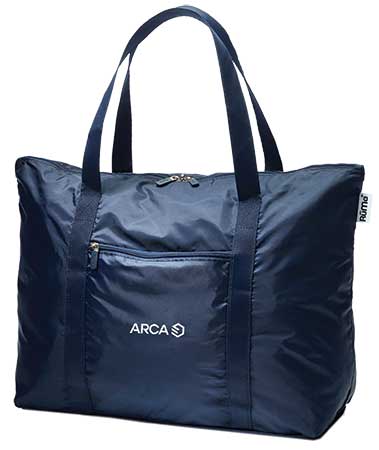
RuMe cFold travel duffel (100016) from Gemline (asi/56070); gemline.com

North Face ladies full-zip fleece jacket (NF0A3SEV) from SanMar (asi/84863); sanmar.com

Contigo BPA-free Tritan bottle (33248) from ETS Express (asi/51197); etsexpress.com
Inspired Choices
Suppliers are crafting retail-inspired products that are every bit as worthy as their name-brand counterparts.
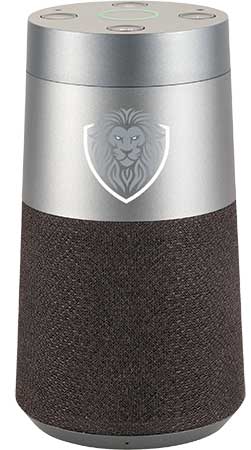
Wi-Fi and Bluetooth speaker (7198-47) with Amazon Alexa voice service from Leed’s (asi/66887); pcna.com/leeds
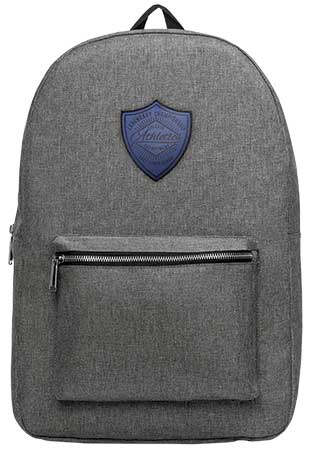
Nomad classic backpack (BG106), part of the Ashbury collection from Spector & Co. (asi/88660); spectorandco.ca
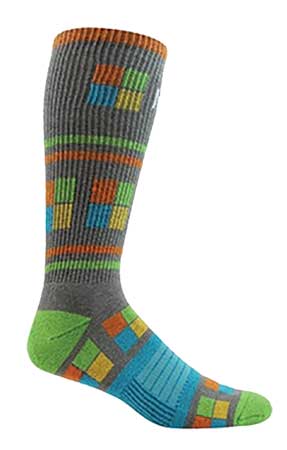
Pantone-matched performance calf sock (PPCS100) from Pop! Promos (asi/45657); poppromos.com
Sara Lavenduski is the senior editor for Advantages. Tweet: @SaraLav_ASI. Contact: slavenduski@asicentral.com
